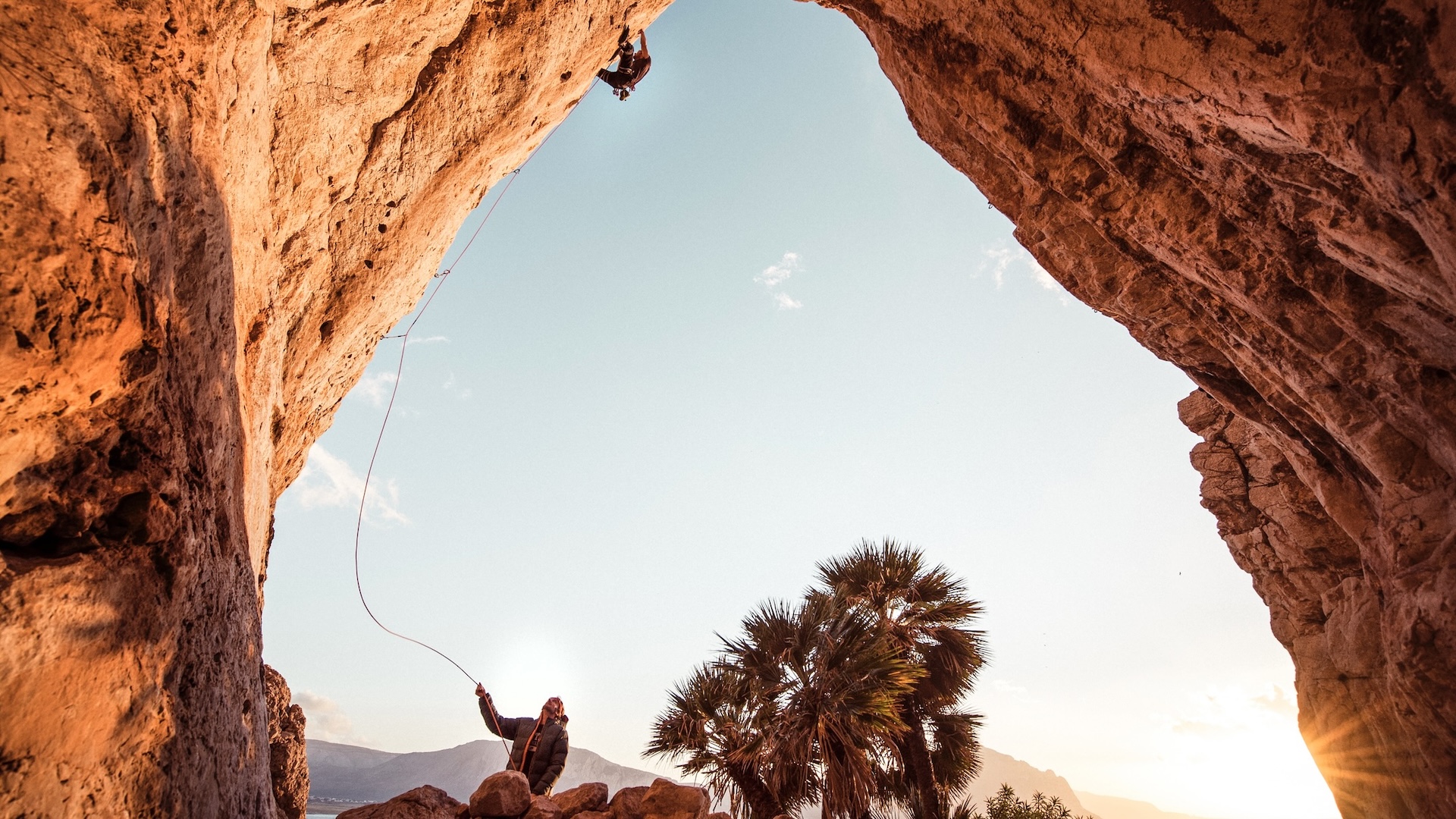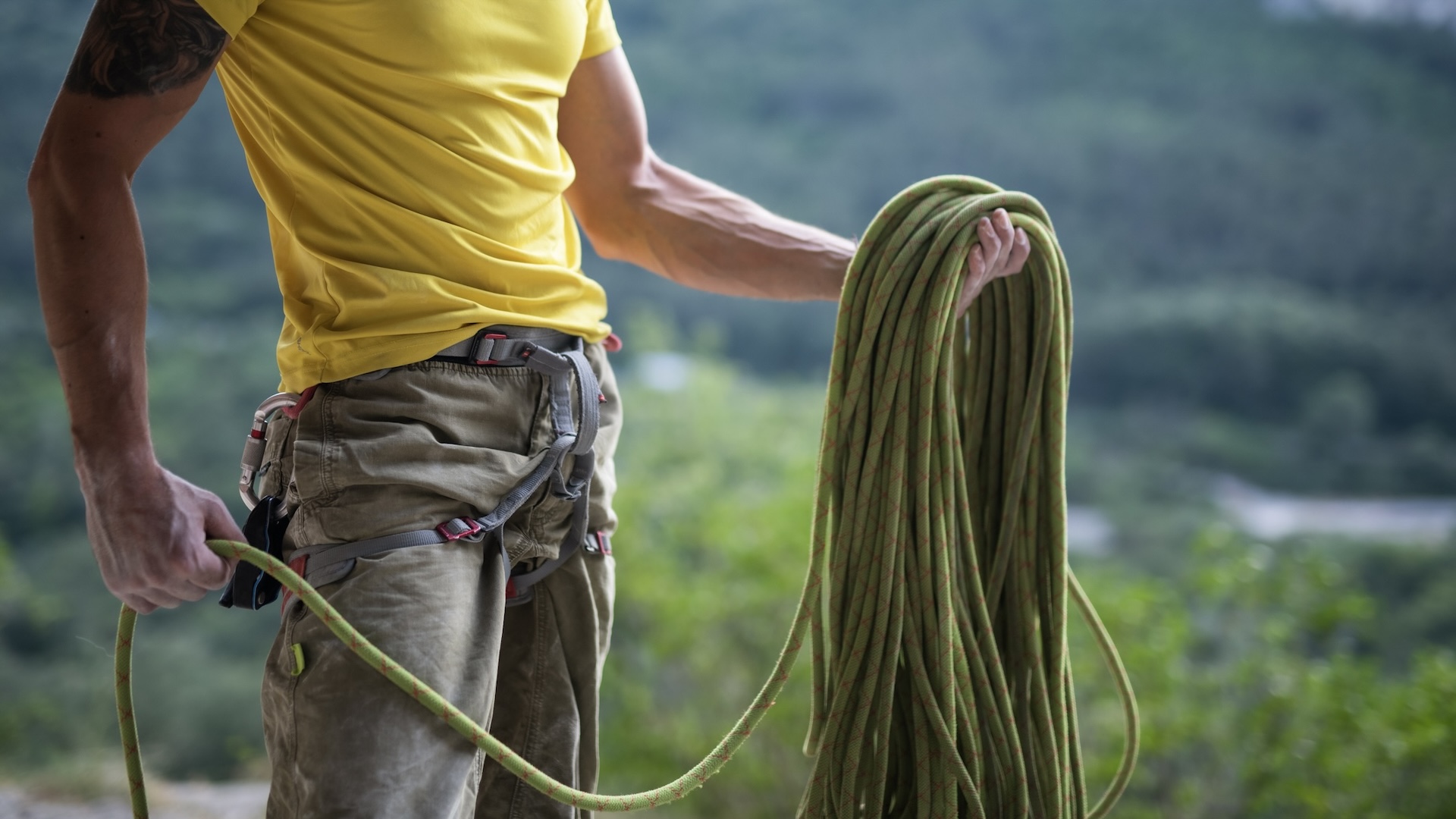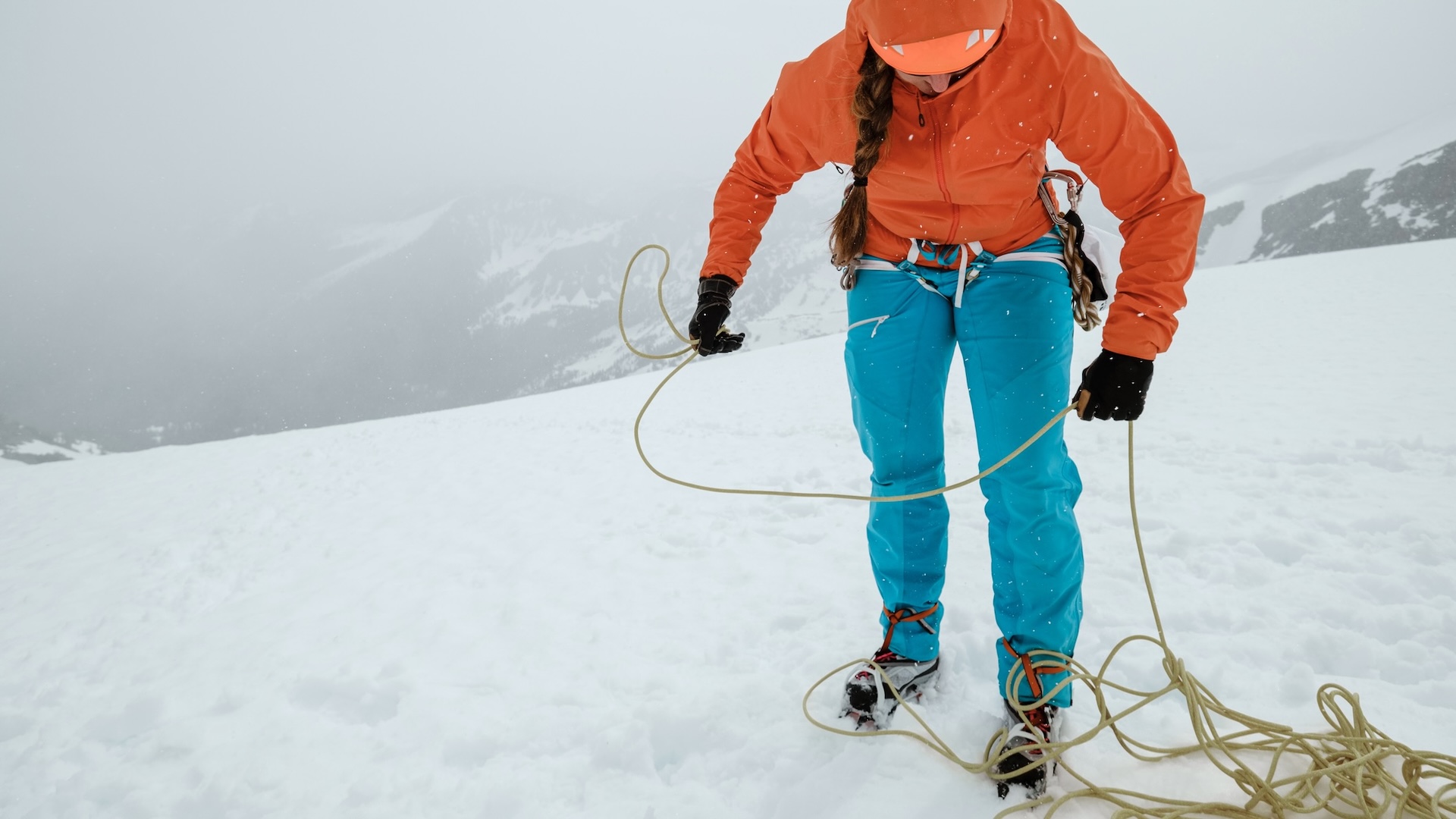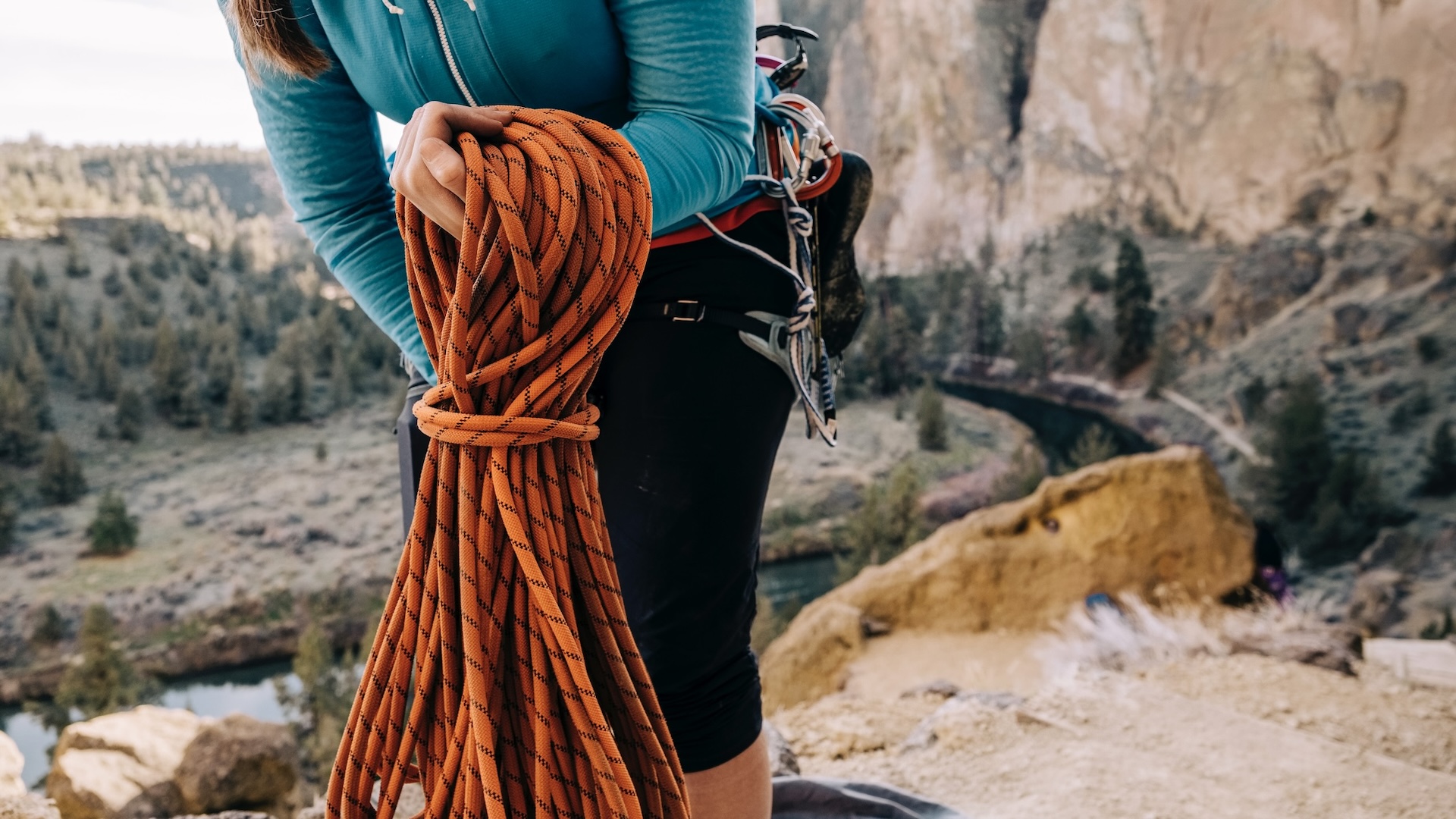Why do climbing ropes get tangled? And how to avoid it
There are several reasons why climbers end up with twisted ropes – but thankfully there are ways to get around the problem

There are many mysteries in life, including why we end up with so many odd socks during the laundry process, why does bread toast perfectly the first time and then burn the next time – and why do ropes get so easily tangled? For climbers, the quest to keep ropes tangle-free is essential for safety and also necessary for saving time.
A tangled rope could cause a major problem if you are belaying a climber. Any knot or tangle in the rope might prevent you from feeding out the rope properly to the lead climber, or stop an effective arresting of a fall if your climbing partner comes off the rock face or indoor climbing wall.
A tangled rope is also an issue at the start of a climbing session because it can waste valuable time as you try to untangle and uncoil it.
We take a look at why climbing ropes get tangled – and how to avoid this frustration.

The first rope uncoil
Many people new to climbing do not realise that factory coiling during the manufacture process can put a twist in the rope. This is especially true of climbing ropes in past decades.
Traditional climbing ropes are wound up and packaged as a coil. Then, if you are not careful, when you first go to uncoil the rope and use it, it can too easily turn into a tangled mess.
Pulling the rope straight from the packaging is the worst thing you can do.
Advnture Newsletter
All the latest inspiration, tips and guides to help you plan your next Advnture!
Instead, when you first use a new climbing rope you should unwind it exactly the same way that was wound up. The way to do this is to place the rope over your forearms and unwind it.
You should aim to “flake” a rope several times, which means running the rope through your hands, end to end, and back again a few times to ensure any manufacture twists and tension are removed from the length of rope.
Thankfully, in more recent times, many more manufacturers are supplying their ropes packaged and ready for use. This is also called a 'ready to climb' rope.
These ropes can be taken out of the pack and placed straight in a rope bag and used. These ropes should not be unwound in the same way as traditionally wound ropes because the reverse happens and the unwinding will cause twists and tangles in the rope.
You can check on the packaging to see if it is a 'ready to climb' rope, or not.

Rope tangles while in use
Each time you use a rope, it’s a good idea to flake it out. Running the rope through your hands from one end to the other will ensure it is tangle free.
However, the rope can become tangled while in usen especially when using directional anchors and belay devices.
Directional anchors are the pieces of gear used by climbers when outdoors on rock, such as bolts, cams and nuts. The gear is what climbers use for keeping rope in place and prevent a fall. It might be that a directional anchor is used for top-roping, traversing or rapelling (when using a rope to descend from a route).
Twists in the rope can occur if a rope is pulled through a top rope directional anchor, or a belay chain, that is not properly aligned and this is even more likely when the rope is under tension.
Basically, the more directional changes and the more friction on the rope, the greater than chance of twists and subsequent tangles.
When using anchors and a rope during climbing you should try to make sure the axes of the anchors are perpendicularly aligned with the central axis of the rope or the anchors have as much play as possible and can realign themselves.
The crossing of ropes on top-rope directional anchors should also be avoided.
Rope tangles in belay devices
Issues with rope twists and tangles can call occur when using a belay device. This can happen during belaying of a partner or when rappelling.
The rope can be subjected to friction due to being directed through the belay device and anchors and as well as against the rock face.
The greater the friction the higher the chance of twists in the rope, which can lead to tangling.
It’s a good idea to use a modern style of belay device for reducing rope friction.

A warning about the Munter hitch
A Munter hitch, also called an Italian hitch, is a method that allows climbers to belay safely without a belay device.
But, be warned, because rappelling a rope with a Munter hitch will often lead to bad twists in the rope and ultimately may cause tangling.
Recoiling a rope to prevent tangles
When recoiling your rope after use, make sure you are careful about the coiling process. There are plenty of useful YouTube instruction films on how to coil a climbing rope, including this one by the outdoor apparel brand Mammut. You can watch the whole video below.https://youtube.com/shorts/o1T385-ND0w?feature=shared
Once the rope is recoiled, you should make sure you store it somewhere that will not tamper with the coils. A rope bag is the best place.
Rope storage issues
Rather than simply coiling a rope, where each coil is a straightforward revolution, it’s better to use the lap coil method, where the rope is picked up alternately in loops twisted to the left and right.
By using a left to right flow of coils, the rope remains as neutral as possible and this reduces the chances of it becoming tense, twisted and tangled.
Ideally, you should store your climbing rope in a rope bag.
Tangles in an open rope
When in use, there is a potential for climbing ropes to become tangled. The end of a rope, below where the belaying climber stands can end up in a tangled mess.
Rope management is really important and this is something that is easily learned by watching more experienced climbers.
A good climber will flake out their rope before use and then lay it in loose coils close to where the climb will take place, before making use of the rope for the climb.

Fiona Russell is a widely published adventure journalist and blogger, better known as Fiona Outdoors. She is based in Scotland and is an all-round outdoors enthusiast with favorite activities including trail running, mountain walking, mountain biking, road cycling, triathlon and skiing (both downhill and backcountry). Aside from her own adventures, Fiona's biggest aim is to inspire others to enjoy getting outside and exploring, especially through her writing. She is also rarely seen without a running skort! Find out more at Fiona Outdoors.

